When it comes to baking, the term dry cake often raises eyebrows. You might wonder, “What exactly is a dry cake?” Well, you’re in for a treat! In this article, we’ll explore the fascinating world of dry cakes, including what makes them unique, the ingredients involved, and how they differ from their moist counterparts.
We will also dive into popular types of dry cakes, tips for moisture control, and the science behind their texture. Whether you’re a baking novice or a seasoned pro, understanding dry cakes can help elevate your baking game. Let’s get started!
Understanding Dry Cake
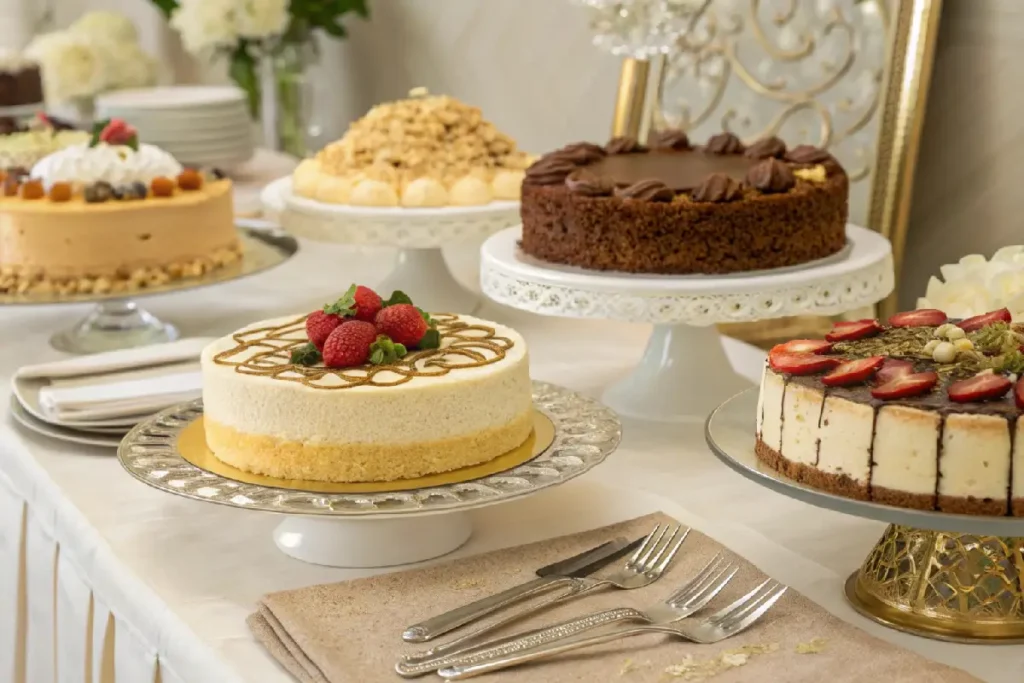
What is a Dry Cake?
So, what is a dry cake? Simply put, a dry cake is a type of cake that has a crumbly texture and less moisture compared to traditional moist cakes. Unlike fluffy cakes that melt in your mouth,
dry cakes often have a denser consistency, which can make them perfect for certain occasions. For example, many people enjoy dry cakes with coffee or tea, as their texture pairs well with these beverages.
Common Characteristics of Dry Cakes
What’s interesting about dry cakes is their texture and flavor profile. They tend to be less sweet and have a more pronounced flavor of their main ingredients, such as chocolate, nuts, or spices. You might find that dry cakes often have a crusty exterior that contrasts with their interior. This is a result of specific baking techniques and ingredient choices.
While some bakers might worry about a cake being too dry,
it’s essential to remember that a well-made dry cake can be a delightful addition to your dessert table.
They can also be dressed up with glazes or frostings that add a touch of sweetness without overwhelming the cake itself. In the following sections, we’ll delve deeper into what contributes to a dry cake’s unique qualities.
Curious about simplicity in baking? Discover "What Is Plain Cake Called? A Guide to Simple Baking Bliss" and learn how to create delicious, no-fuss cakes that everyone will love!
Ingredients That Make a Cake Dry
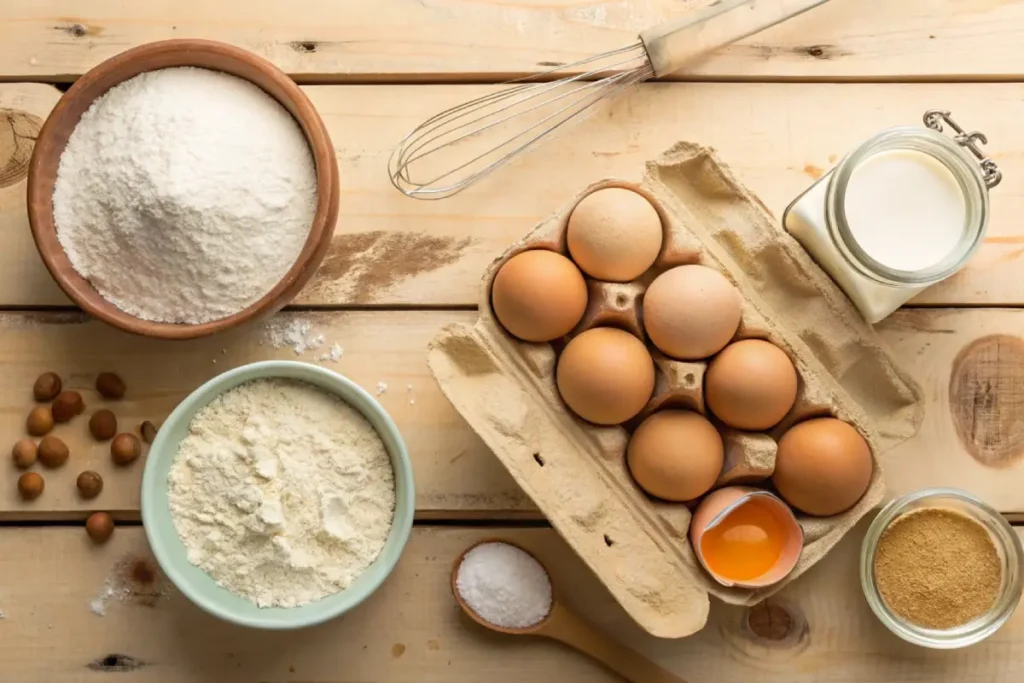
Flour Types and Their Impact
When exploring what is a dry cake, consider the type of flour you use. Different flours can significantly influence a cake’s moisture content. For instance, bakers commonly use all-purpose flour, but they might opt for cake flour, which has less protein, to create a lighter, less dense cake.
On the flip side, if you use bread flour, which has a higher protein content, the cake may turn out drier and chewier. Thus, your choice of flour plays a crucial role in determining the overall texture of your cake.
The Role of Fats and Liquids
Next, let’s discuss fats and liquids. Fats like butter or oil add moisture and richness to cakes. However, if you use too little fat, the texture can turn dry. Liquid ingredients, such as milk or eggs, also help retain moisture.
But here’s the catch: if you overmix the cake batter, it can develop gluten, resulting in a denser and potentially drier cake. Therefore, striking the right balance of fats and liquids is essential for achieving the perfect dry cake.
Sugar Content and Its Effects
Finally, consider sugar, which isn’t just for sweetness; it also affects moisture. Sugar attracts moisture, so cakes with higher sugar content tend to remain moister. If you aim for a dry cake, experiment with reducing the sugar slightly.
However, be cautious—too little sugar can cause other issues, like a cake that doesn’t rise properly. Therefore, understanding these ingredients is key to mastering what is a dry cake and how to make it just right.
Want to expand your cake knowledge? Check out "What Are the Three Major Types of Cakes? A Detailed Explanation" and dive into the world of cakes to find out what's perfect for your next celebration!
How Dry Cakes are Made
Basic Dry Cake Recipe
Now that we’ve covered the ingredients, let’s look at how to make a dry cake. A basic dry cake recipe starts with simple ingredients: flour, sugar, fat, and liquid. Here’s a straightforward method to follow:
- Preheat your oven to 350°F (175°C).
- In a bowl, mix together 2 cups of all-purpose flour, 1 cup of sugar, and 1 teaspoon of baking powder.
- In another bowl, combine ½ cup of melted butter and 1 cup of milk.
- Gradually add the wet ingredients to the dry ones, mixing until just combined. Be gentle to avoid overmixing, which can lead to dryness!
- Finally, pour the batter into a greased cake pan and bake for about 30–35 minutes, or until a toothpick comes out clean.
Techniques for Baking Dry Cakes
Baking a dry cake involves specific techniques. First, focus on the mixing method. As mentioned, overmixing your batter can develop gluten and make your cake dense.
To avoid this, mix just until the ingredients combine. Additionally, use the right baking temperature. Baking at too high a temperature can cause the exterior to cook too quickly, leading to a dry interior.
Common Mistakes to Avoid
Lastly, let’s touch on common mistakes. One common pitfall involves not measuring ingredients accurately. Using too much flour can make your cake dry, while too little can cause it to collapse.
Another mistake occurs when you open the oven door too often while baking, which can lower the temperature and affect how the cake cooks. By keeping these tips in mind, you’ll be well on your way to mastering what is a dry cake and how to bake it perfectly!
Counting calories? Get the scoop on "How many calories in chocolate cake?" to satisfy your sweet tooth while keeping track of your diet!
Popular Types of Dry Cakes
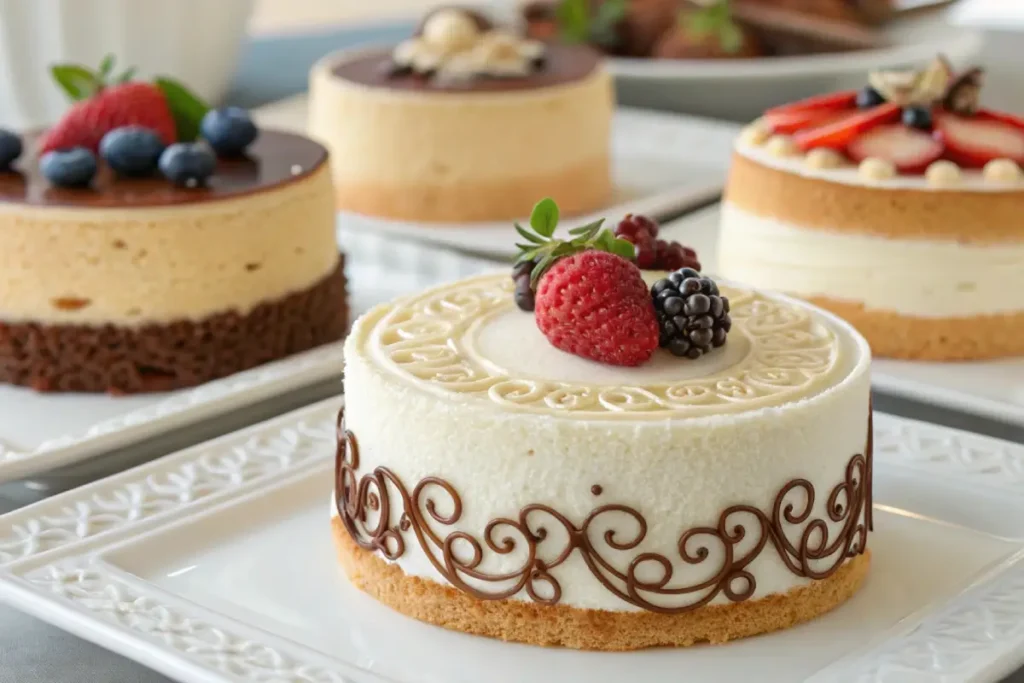
Examples of Dry Cakes
When you think about what is a dry cake, several popular varieties come to mind. One classic example is the pound cake. This cake features a dense texture and rich flavor, often made with equal parts of flour, butter, sugar, and eggs. Another favorite is the sponge cake, which, while lighter, can still turn out dry if you don’t bake it properly.
Then there’s the angel food cake, a delightful treat that remains airy yet can become quite dry if you overbake it. Bakers primarily use egg whites and sugar to create this cake, giving it a unique texture that pairs beautifully with fresh fruits or whipped cream. Additionally, many people consider fruitcakes to be dry cakes, especially those packed with nuts and dried fruits, making them perfect for holiday celebrations.
Regional Variations of Dry Cakes
Dry cakes also vary by region. For instance, in Italy, you might encounter panettone, a sweet bread loaf that can be quite dry but often pairs well with a glass of wine. In the UK, the Victoria sponge stands out as a popular choice, which can also turn dry if you don’t achieve the right balance of ingredients.
These cakes showcase different flavors and textures while highlighting how cultural preferences influence baking styles. Understanding these variations can deepen your appreciation for dry cakes and inspire you to explore new recipes.
If you’re curious about trying your hand at baking, consider checking out other delicious recipes on our site!
Struggling with moisture in your cakes? Read "Why Are Tres Leches Not Soggy? Perfect Tips for Moist Cake" for essential tips on achieving the perfect cake texture every time!
Moisture Control in Dry Cakes
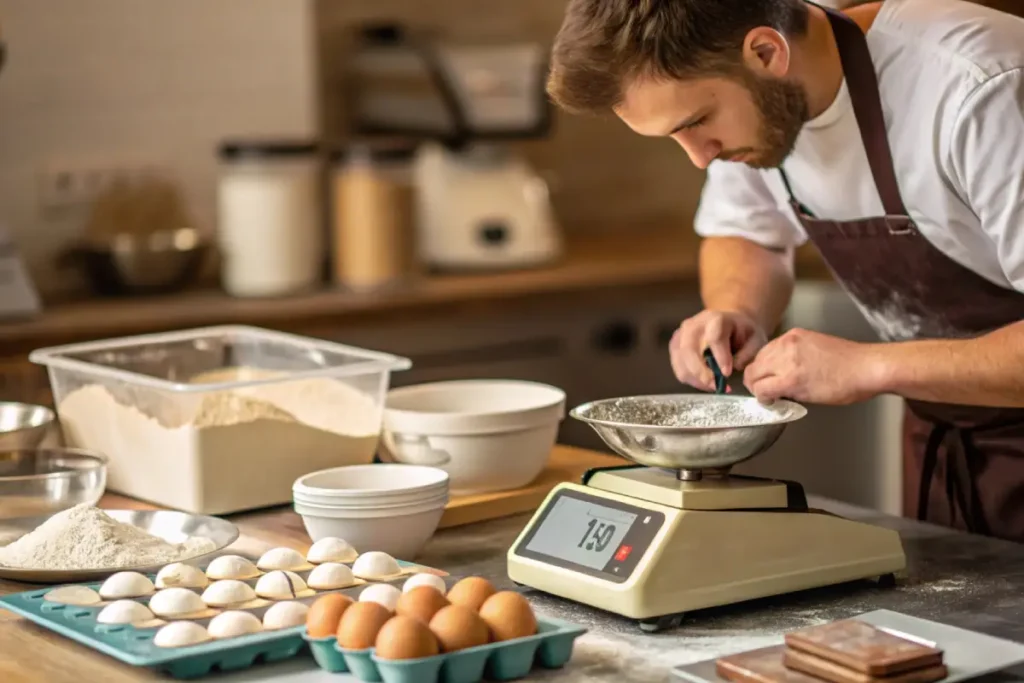
Understanding Moisture Content
Now that we’ve explored various types of dry cakes, let’s discuss moisture control. Understanding moisture content is crucial when baking a dry cake. You need to find the right balance between dry and wet ingredients. Too much moisture can lead to a cake that’s too dense, while too little can result in a crumbly texture.
Tips for Maintaining Dryness
To maintain the desired dryness in your cake, consider these tips. First, store your cake properly. Keeping it in an airtight container helps prevent it from absorbing moisture from the air. Additionally, if you use ingredients like fruits or yogurt, be mindful of their moisture content. You might want to reduce other liquid ingredients to compensate.
Another helpful tip is to let your cake cool completely before storing it. This practice prevents condensation from forming, which can make your cake soggy. Lastly, if you find your cake is too dry after baking, don’t fret! You can always serve it with a drizzle of glaze or a scoop of ice cream to add some moisture back into the mix.
By mastering these moisture control techniques, you’ll equip yourself to create the perfect dry cake. Understanding what is a dry cake and how to manage its moisture can elevate your baking skills and impress your friends and family!
Fascinated by bite-sized treats? Explore "What is the Smallest Cake Called? Discover the Allure of Bite-Sized Wonders" to find out more about these delightful mini desserts!
The Science Behind Dry Cakes
Chemical Reactions in Baking
To truly understand what is a dry cake, we should dive into the science behind it. Baking is all about chemical reactions, and these reactions play a crucial role in determining the final product. When you mix your ingredients and apply heat, several things happen. For starters, baking powder or baking soda releases carbon dioxide, which helps the cake rise. This gas forms bubbles in the batter, making it light and fluffy. However, if you add too much flour or do not include enough liquid, the cake can end up dry and crumbly.
Moreover, the temperature at which you bake also affects these reactions. If the oven temperature is too high, the outer layer of the cake may cook too quickly. This can lead to a hard crust, which traps moisture inside. Unfortunately, this scenario can result in an unevenly baked cake where the inside remains wet while the outside becomes dry and tough. Hence, maintaining the correct temperature is vital for achieving the perfect dry cake.
Discover the Secrets! Unlock the ultimate tips and tricks to transform your dry cake into a moist masterpiece. Click here to read our in-depth blog post on How To Make a Dry Cake Moist and elevate your baking game today!
How Texture is Affected
Another important factor in baking is how the ingredients interact with one another. For example, fats coat flour particles, which can limit gluten formation. Gluten is the protein that provides structure to baked goods. While some gluten is necessary for a good cake, too much gluten can make a cake tough. Therefore, when you’re aiming for a dry cake, you want to balance these elements carefully.
For instance, if you use too much fat, the cake can become overly moist. Conversely, using too little fat can lead to a dry and crumbly texture. Understanding the role of fats—such as butter, oil, or shortening—can help you adjust your recipes. Each type of fat contributes differently to the final texture. Butter, for example, adds flavor and moisture, while oil can create a denser cake.
Additionally, the type of flour you choose can significantly impact texture. All-purpose flour works well for most cakes, but using cake flour can yield a lighter texture. Cake flour has a lower protein content, resulting in less gluten formation, which is ideal for tender cakes. On the other hand, bread flour has a higher protein level, making it unsuitable for dry cakes, as it promotes gluten development.
Bake Like a Pro! Don’t let a dry cake ruin your dessert dreams! Dive into our expert guide on How To Make a Dry Cake Moist and learn the techniques that will keep your cakes deliciously moist.
The Role of Sugar and Moisture
Furthermore, sugar plays a crucial role in baking by affecting moisture retention. Sugar attracts moisture and helps keep cakes moist, which is essential for achieving the right texture. Therefore, when you aim for a dry cake, you might consider tinkering with the sugar content. Reducing sugar can lead to a drier texture, but be cautious—too little sugar can also prevent your cake from rising properly.
In addition to sugar, the choice of liquid ingredients impacts moisture significantly. Ingredients like milk, yogurt, or even fruit purées add moisture to the batter. If you reduce these ingredients, you may inadvertently dry out your cake. Thus, understanding the balance between dry and wet ingredients is vital for mastering what is a dry cake.
Experimenting with Techniques
Once you grasp the science behind dry cakes, you’ll be better prepared to experiment with different techniques. For instance, consider the mixing method. Overmixing your batter can lead to excessive gluten formation, resulting in a dense and dry cake. Instead, mix just until the ingredients combine to achieve a tender crumb.
Another technique to consider is the baking time. Underbaking a cake might seem risky, but a slight underbake can actually keep the cake from drying out. If you remove the cake from the oven while it’s still slightly moist in the center, it will continue to cook as it cools, leading to a better texture.
FAQs:
What causes a cake to be dry?
One common question is, “What causes a cake to be dry?” Several factors can contribute to this issue. First, using too much flour or not enough liquid can lead to dryness. Additionally, overbaking is a significant culprit, as it removes moisture from the cake.
How can I make a dry cake moist?
If you find yourself with a dry cake, you might wonder how to fix it. One effective method is to serve it with a sauce or glaze. For example, a simple syrup or fruit compote can add moisture back into the cake. Alternatively, consider using a cream or custard to accompany your dry cake, enhancing the overall experience.
Are dry cakes unhealthy?
Finally, many people ask if dry cakes are unhealthy. The truth is, the healthiness of any cake largely depends on the ingredients used. While dry cakes can sometimes have less sugar or fat, they can still be part of a balanced diet when enjoyed in moderation.
By answering these common questions, we hope you have a clearer understanding of what is a dry cake and how to enjoy it!
Conclusion
In conclusion, understanding what is a dry cake opens up a whole new world of baking possibilities. From exploring the ingredients that make a cake dry to mastering the techniques for baking, you now have the tools to create delightful dry cakes that can impress your family and friends.
Whether you opt for a classic pound cake or experiment with regional variations, remember that the balance of moisture, texture, and flavor is key. Happy baking!


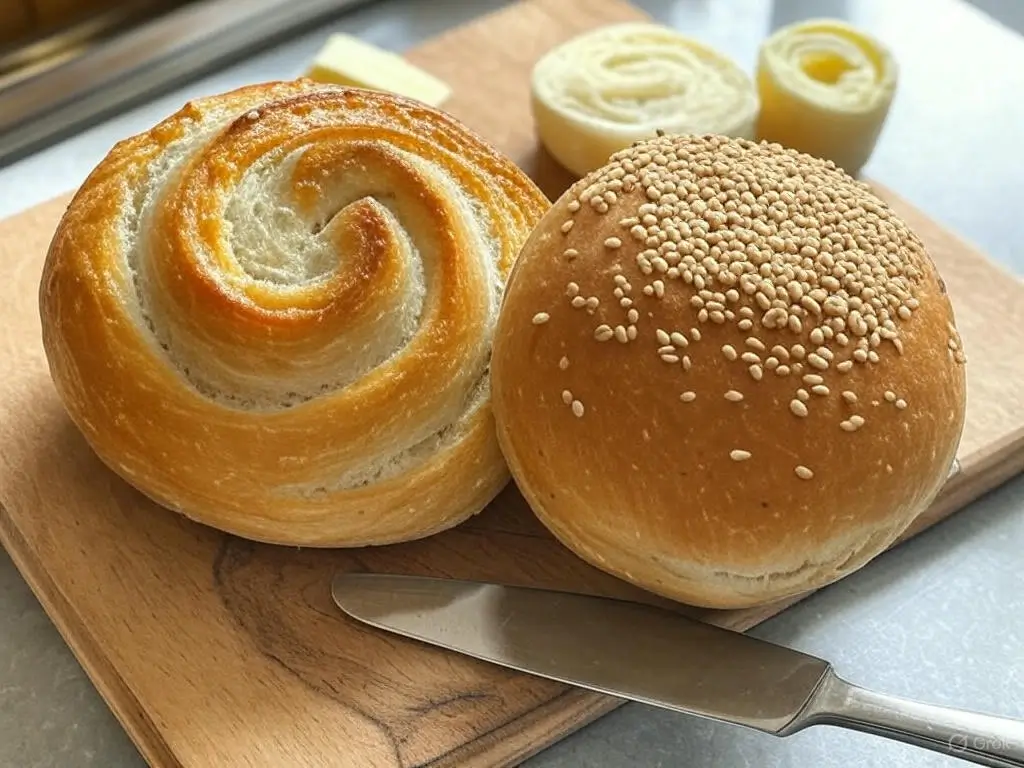




2 thoughts on “What is a Dry Cake? An In-Depth Exploration”